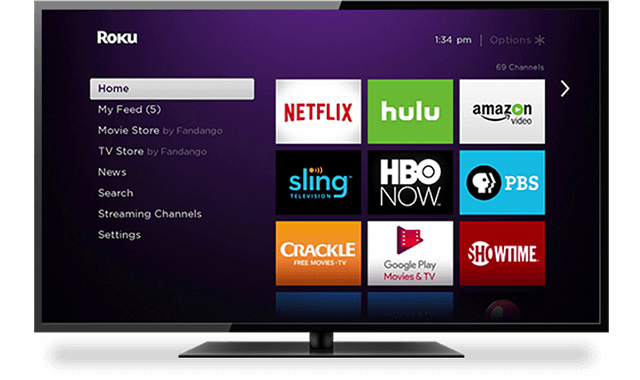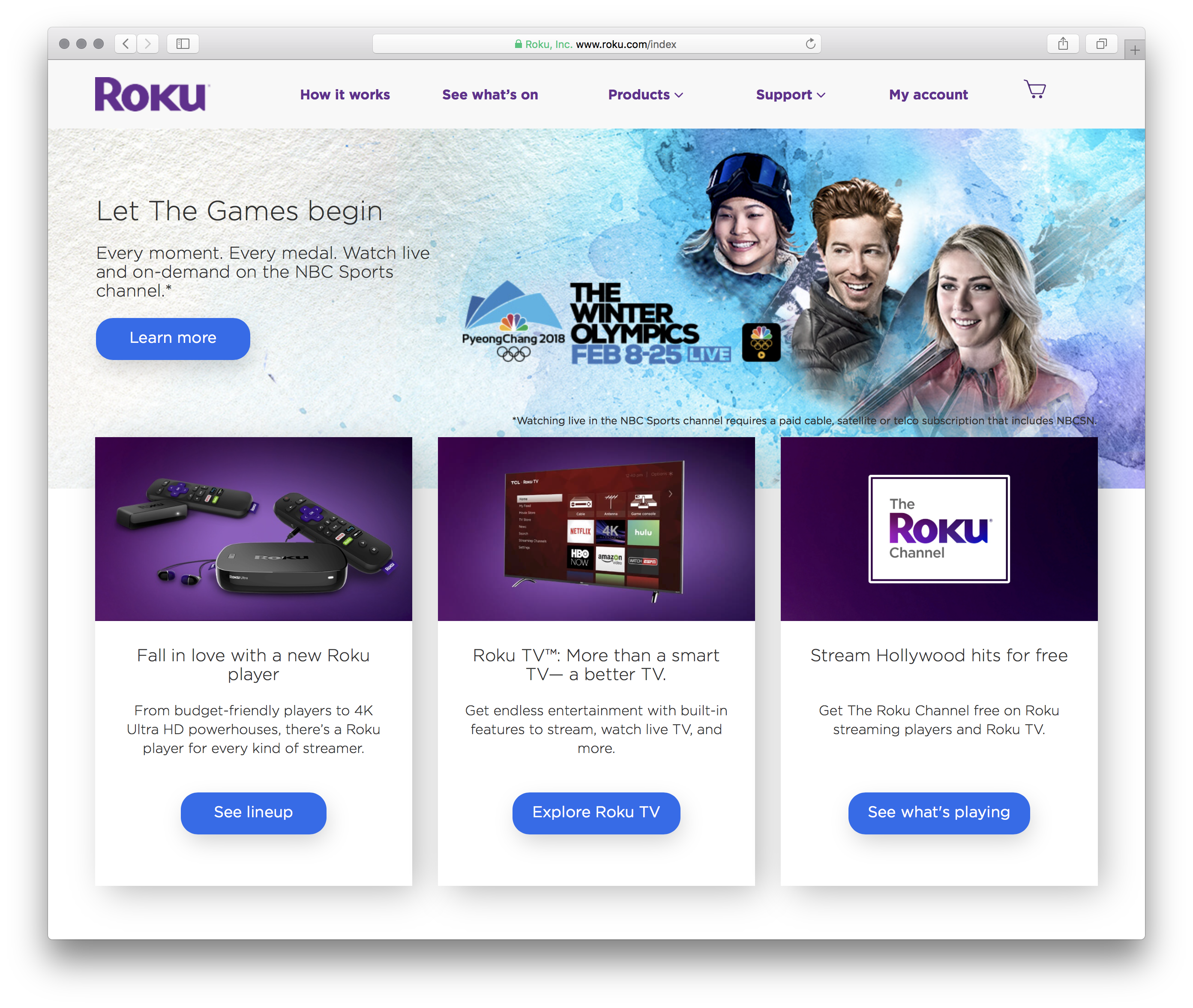This is day 7 of 15 in a short series on inclusive design. If you missed earlier posts, see day 1 here or view the full list.
“Solve for one, extend to many” is a key principle of inclusive design which I learned from Kat Holmes and her work with Microsoft.
Via fellow WordPresser Leo Postovoit, I learned more about how Roku followed this principle to achieve commercial success. “From a small hardware start-up to a publicly listed company with an estimated 2017 revenue of $500 million and a $5 billion market cap,” according to Variety.

Roku is successful because of how user-friendly everything is. Along with Apple TV, Chromecast, Android TV, and others — the experience is a big improvement over traditional TVs.
CEO Anthony Wood explains in Variety:
Roku’s original user interface was anything but flashy. Wood instead aimed for simplicity, banning all but the most essential buttons from Roku’s remote control, and calling apps “channels” to help TV viewers in their transition to the new medium. “Companies commonly overdesign something and make it kind of pretty, but not easy,” he says. “Customers, what they really want is easy.”
Here’s what people love about Roku:
— The minimal interface takes full advantage of “10-Foot UI” principle by using simple, intuitive navigation based on a grid. Large and readable from ten feet because you have no mouse/keyboard, viewing from the couch. (The navigations options are limited to left, right, up, down — click to select). Requires no fancy 100-button or huge user manual. Setup is a breeze.
— A trimmed down TV remote with programmable buttons; plus dedicated buttons for popular streaming services like Netflix. No menus to scroll through, go straight to viewing.
— Voice commands to search via the remote, and the search matches available content quickly from your input. Leo says: “My favorite feature is the universal search, where it actually queries every channel for listings, fuzzy searches too. You can find every “Batman” movie, including the Dark Knight!”
— Packaged as low-cost hardware — basic streaming kit sell for $29 — Roku positions itself as an attractive alternative to regular TVs that require a cable or satellite subscription. Streaming requires WiFi, and increasing broadband speeds boost the value of high-quality, always available content.
— One of my favorite features is the earphone jack in the remote control — great for private listening and for those who need a little extra hearing assistance.
[More about the 10-foot UI, if you’re curious like me: Wikipedia article and a user design guide.]
Though I couldn’t find evidence for it, the person Roku seems to have in mind in solving the typical TV problems is a cost-conscious, non-technical person over a certain age. Your grandparent might prefer a simple gadget that does one thing well, for example.
Fewer cords to plug in. No need to tinker or walk through endless steps of complicated menus to set up the TV. They certainly don’t love or wish to understand how to operate 100-button remote controls. [That’s why they call you over! “Fix my TV again, please.”]


The beauty of “solve for one, extend to many” is that the same elegant UI and intuitive remote works well for seniors and the elderly — but also works great for everyone else.
As Leo told me, “It benefits all people.”
Erica Manfred explains her love for Roku as a hard-of-hearing senior citizen: Aging With Geekitude: Why Roku is My New Crush:
Roku has terrific little feature, a headset jack on the remote so you can listen to your favorite shows and movies without bothering anyone. For a hearing aid wearer like me this is a godsend. The Roku also supports closed captioning, another huge benefit for the hearing impaired and anyone who can’t understand current slang.
(Leo notes 30-40 percent of Roku content still isn’t captioned.)
Roku proves to me that simple and inclusive hardware+software is good design and good business.
For day 8 of 15 of inclusive design, I’ll share a business success story — how to expand your market by solving for one, extending to many. Because inclusive design is great for business.
About this Inclusive Design series — Coming up next week I’ll give a talk on inclusive design at WordCamp Phoenix 2018. Leading up to the conference I’m publishing notes on voices, stories, products, and other resources: everything I’m learning about this emerging practice. This is day 7 of 15. Read more about the series.

Leave a comment